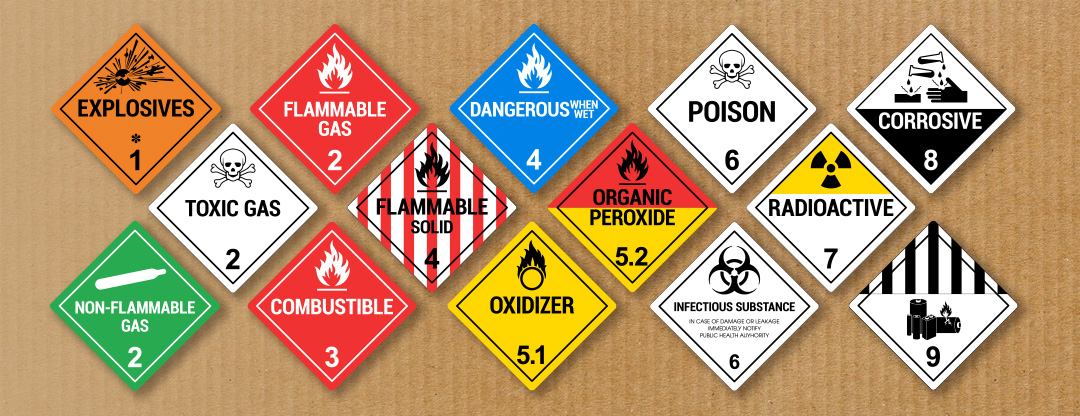Dangerous goods, also called hazardous materials (hazmat), are classified for shipping based on a system that categorizes them by the type of hazard they pose. This system is overseen by the United Nations Globally Harmonized System of Classification and Labelling of Chemicals (GHS), and implemented by various regulatory bodies around the world, including the International Air Transport Association (IATA) for air cargo, the International Maritime Organization (IMO) for ocean freight, and the Federal Aviation Administration (FAA) in the United States.
Here’s a breakdown of the key aspects of dangerous goods classification:
Hazard Classes
The core of the system is dividing dangerous goods into nine hazard classes (see chart below). Each class represents a specific type of hazard, such as explosives, flammable liquids, or toxic substances. Classifying a material correctly is crucial for ensuring safe and proper handling, packaging, labeling, and documentation during transport.
UN Number and Packing Group
Along with the hazard classification, each dangerous good is assigned a unique UN identification number (UN number) for global identification. A packing group may also be designated, which indicates the severity of the risk posed by the material. Packing groups typically range from I (highest danger) to group III (least danger).
Resources for Further Information
- FAA: Dangerous Goods Information & Resources
- FAA: Dangerous Goods Regulations for Air Transportation
- IATA Knowledge Hub: What You Need To Know About The Transport Of Dangerous Goods By Air
- Globally Harmonized System of Classification and Labelling of Chemicals (GHS Rev. 10, 2023)
- USDOT/PHMSA: Hazardous Materials Information Center
- USDOT/PHMSA: Hazardous Materials Markings, Labeling and Placarding Guide (PDF)
Class 1: Explosives
Divisions: 1.1, 1.2, 1.3, 1.4, 1.5, 1.6
Division 1.1 Mass Explosion Hazard
Explosives that have a mass explosion hazard. Examples include dynamite, TNT, nitroglycerin, encased explosives, military ammunition, and mercury(II) culminate.
Division 1.2 Projection Hazard
Explosives that have a projection hazard but not a mass explosion hazard. Examples include some types of fireworks, detonating fuses, and ammunition.
Division 1.3 Fire Hazard
Explosives that have a fire hazard and either a minor blast hazard, a minor projection hazard, or both, but not a mass explosion hazard. Examples include smokeless powder, display fireworks, sodium picramate, some liquid and solid propellants, and some rocket motors.
Division 1.4 Package Confined
Explosives that present no significant blast hazard. Examples include signal flares, tracers for ammunition, distress signals, toy caps, empty primed grenades, and some small arms ammunition.
Division 1.5 Insensitive Substances
Explosives with the potential to cause mass explosions, but are so insensitive that the probability of detonation is very low. Examples include an ammonium nitrate-fuel oil mixture that contains only ammonium nitrate in pellet form and fuel oil, and some type B blasting agents.
Division 1.6 Extremely Insensitive Substances
Explosives with extreme insensitivity to ignition, no mass explosion hazard, and a negligible probability of accidental initiation or propagation. Examples include ammonium nitrate, military bombs and missiles, and certain explosive substances in a wet state.

Class 2: Gases
Divisions: 2.1, 2.2, 2.3
Division 2.1 Flammable gases
Examples include butane, propane, acetylene, hydrogen
Division 2.2 Non-flammable, non-toxic gases
Examples include oxygen, liquid nitrogen, compressed air, helium, carbon dioxide, and argon.
Division 2.3 Toxic gases
Examples include chlorine, hydrogen sulfide, sulfur dioxide, bromine chloride, and carbon monoxide.
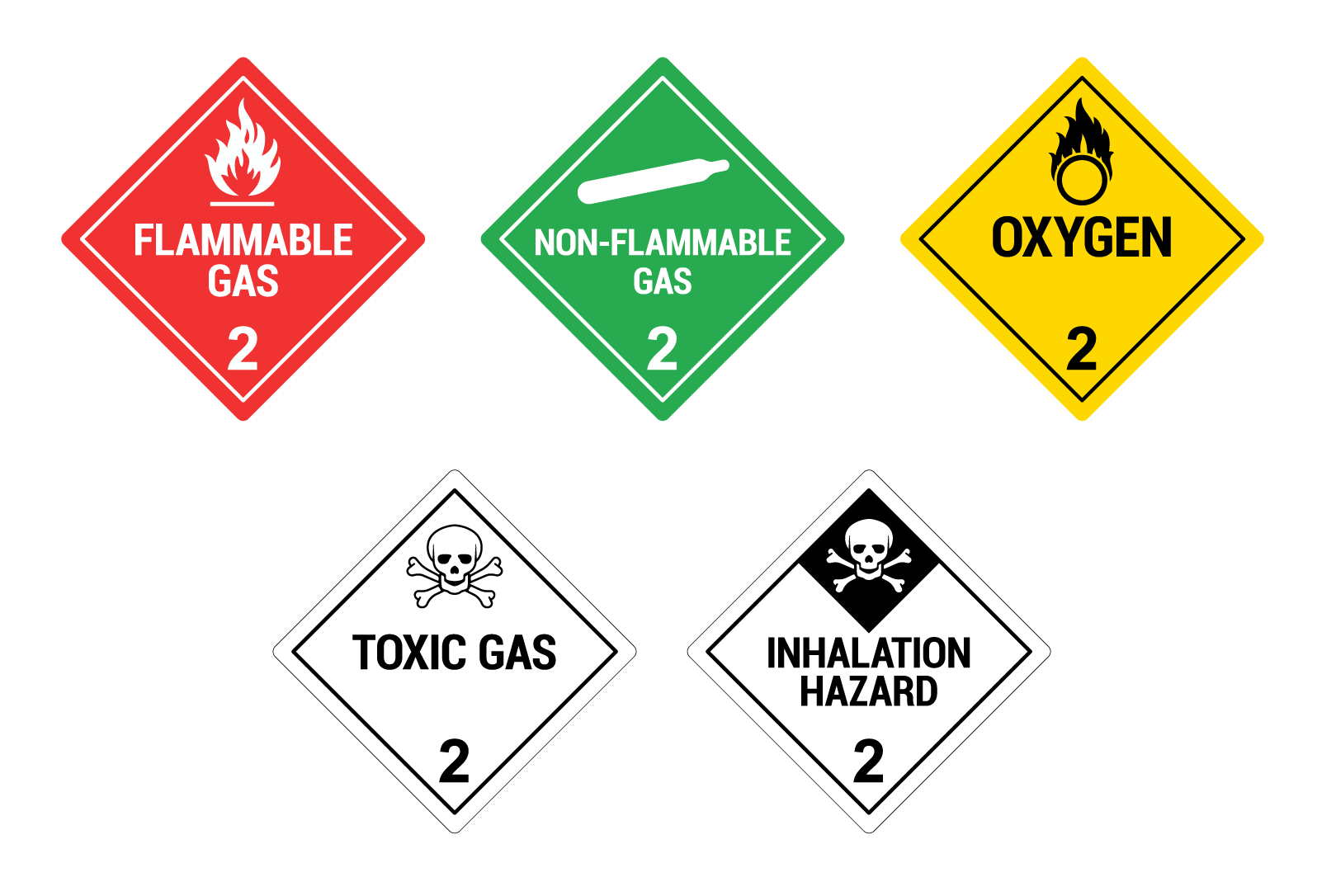
Class 3: Flammable Liquid and Combustible Liquid
Liquids with a boiling point of 35⁰ C or less, or a flash point of 60⁰ C or less. Examples include Acetone, adhesives, alcohols, perfumes, essential oils, hand sanitizer, gasoline, diesel/aviation fuel, heating oil, kerosene, resins, and paints and varnishes.

Class 4: Flammable Solid, Spontaneously Combustible, and Dangerous When Wet
Divisions 4.1, 4.2, 4.3
Division 4.1 Flammable Solids
Examples include hexamine, solid fuel tablets for camping stoves, self-reactive substances, desensitized explosives
Division 4.2 Spontaneous Combustion
Substances susceptible to spontaneous combustion or to spontaneous generation of heat during transportation which can lead to a fire.
Examples by risk level (packing groups):
- Packing group I: pyrophoric solid organic, pyrophoric liquid inorganic, hafnium powder dry.
- Packing group II: self-heating solid organic, organic pigments self-heating, thiourea dioxide, p-nitrodosodi-methylaniline.
- Packing group III: carbon activated, copra, xanthates, zirconium powder dry.
Division 4.3 Dangerous When Wet
Substances that emit flammable gases when they come into contact with water. Examples include aluminum phosphide, calcium, calcium carbide, potassium, sodium, zinc particles, and activated carbon.

Class 5: Oxidizer and Organic Peroxide
Divisions 5.1, 5.2
Division 5.1 Oxidizers
Oxidizing substances that may not be necessarily combustible, but may yield oxygen and cause other materials to combust. Examples include hydrogen peroxide, ammonium, nitrate, potassium chlorate, and sodium nitrate.
Division 5.2 Organic Peroxides
Substances that are thermally unstable, can emit heat, give off harmful or flammable vapors, are liable to explosive decomposition, and react dangerously with other substances. Examples include acetylacetone peroxide, benzoyl peroxide, and peracetic acid.
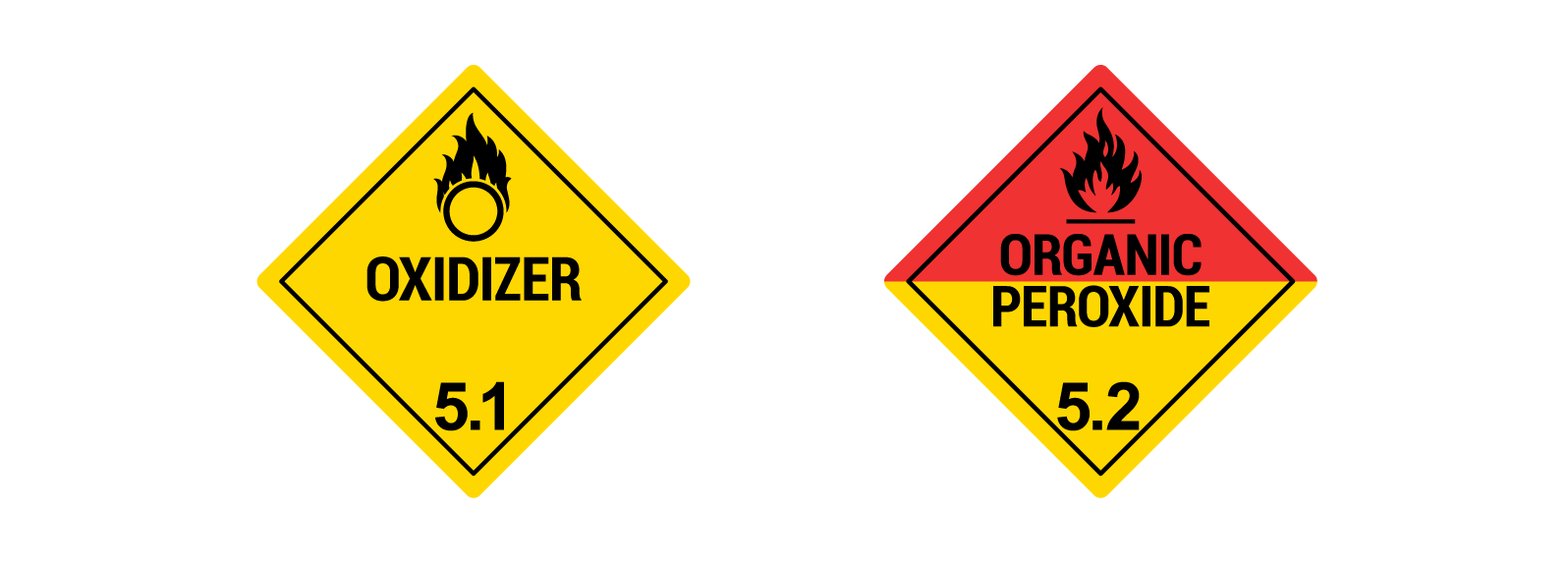
Class 6: Poison (Toxic) and Poison Inhalation Hazard
Divisions 6.1, 6.2
Division 6.1 Toxic (also Poison)
Toxic substances, poisons, and irritating materials (not gasses) that can cause death, injury, or harm if swallowed, inhaled, or by skin contact. Examples: methyl bromide, tear gas, chloroform, arsenics, cyanides, cytotoxic waste, barium compounds, and pesticides.
Division 6.2 Infectious Substances – Biohazards
Infectious substances that can contain pathogens (bacteria, viruses, fungi, or other infectious substances) that can cause disease in humans or animals. Examples: biological products, regulated medical waste, used healthcare products, and forensic materials.
Category A: Infectious substances capable of causing permanent disability or is life-threatening when exposure occurs.
Category B: Any substance that does not meet Category A criteria.
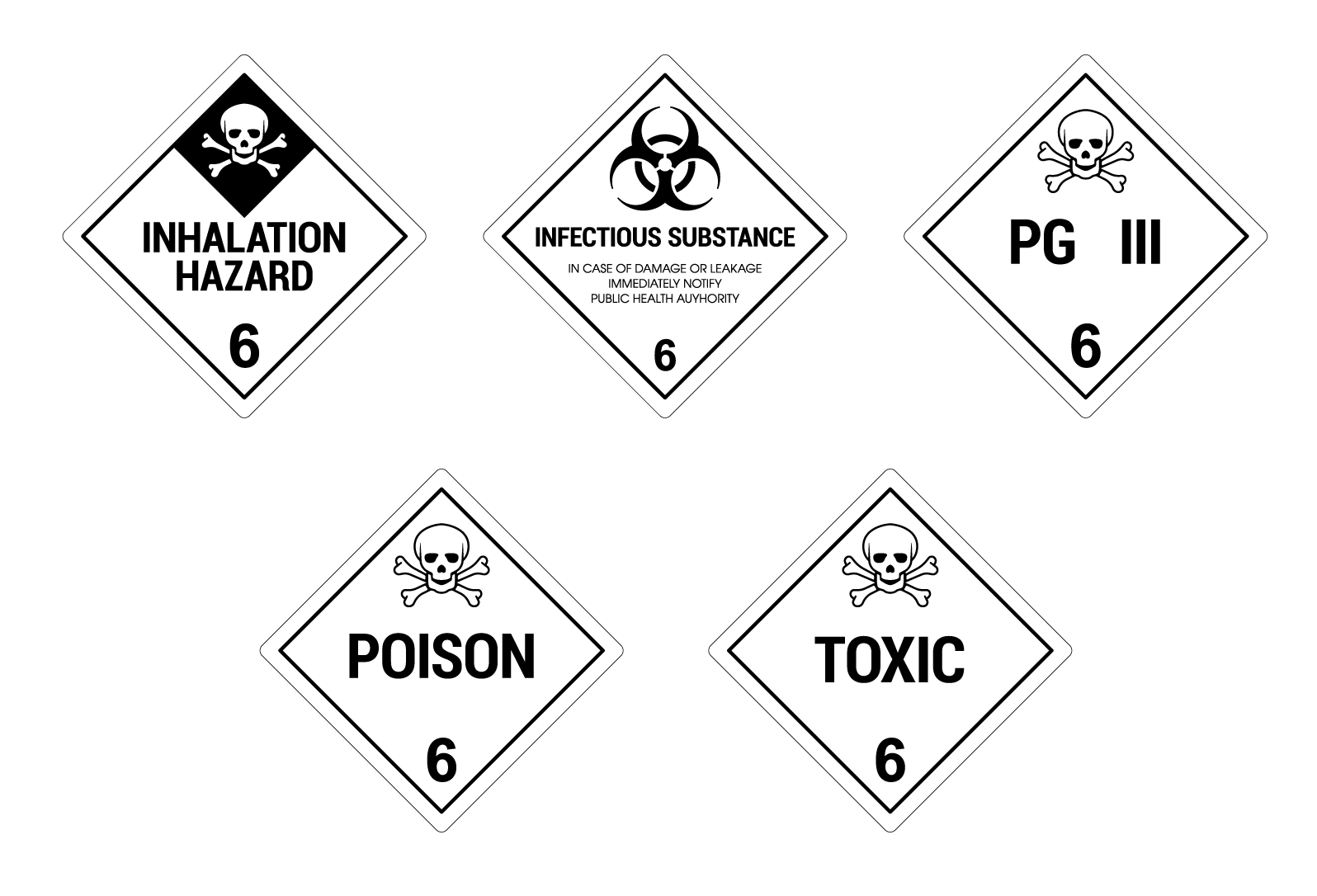
Class 7: Radioactive
Substances that emit invisible ionizing radiation that can be harmful to humans and animals and can cause objects such as aircraft and equipment to become contaminated if not packaged and handled correctly. Examples include enriched uranium, radioactive ores, isotopes, radium, cesium, x-ray equipment, and some medical equipment or parts

Class 8: Corrosive
Substances that can cause severe damage when in contact with living tissue such as skin and could damage or destroy other freight, containers, or aircraft. Examples include acids, corrosive cleaners, formaldehyde, strong bases such as sodium hydroxide, batteries, and battery fluids.

Class 9: Miscellaneous
Miscellaneous Dangerous Items
Any substance or item that poses a danger during transport not covered by other classes. Examples include lithium batteries, battery-powered vehicles and equipment, first aid kits, environmentally hazardous substances, dry ice, magnetized materials, asbestos, life rafts, and chainsaws.
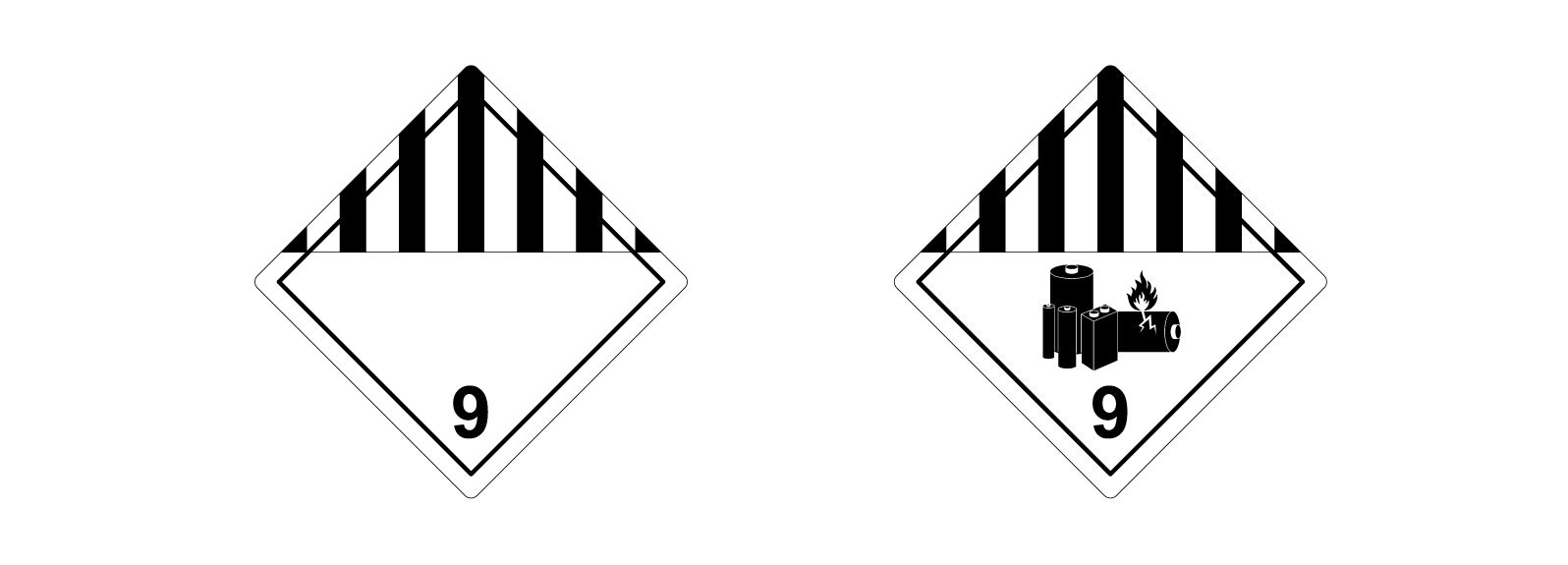
To speak with a CFS Air Cargo Specialist: Phone: (866) 255-6153, email: info@cfsdtw.com – or request a callback consultation.

